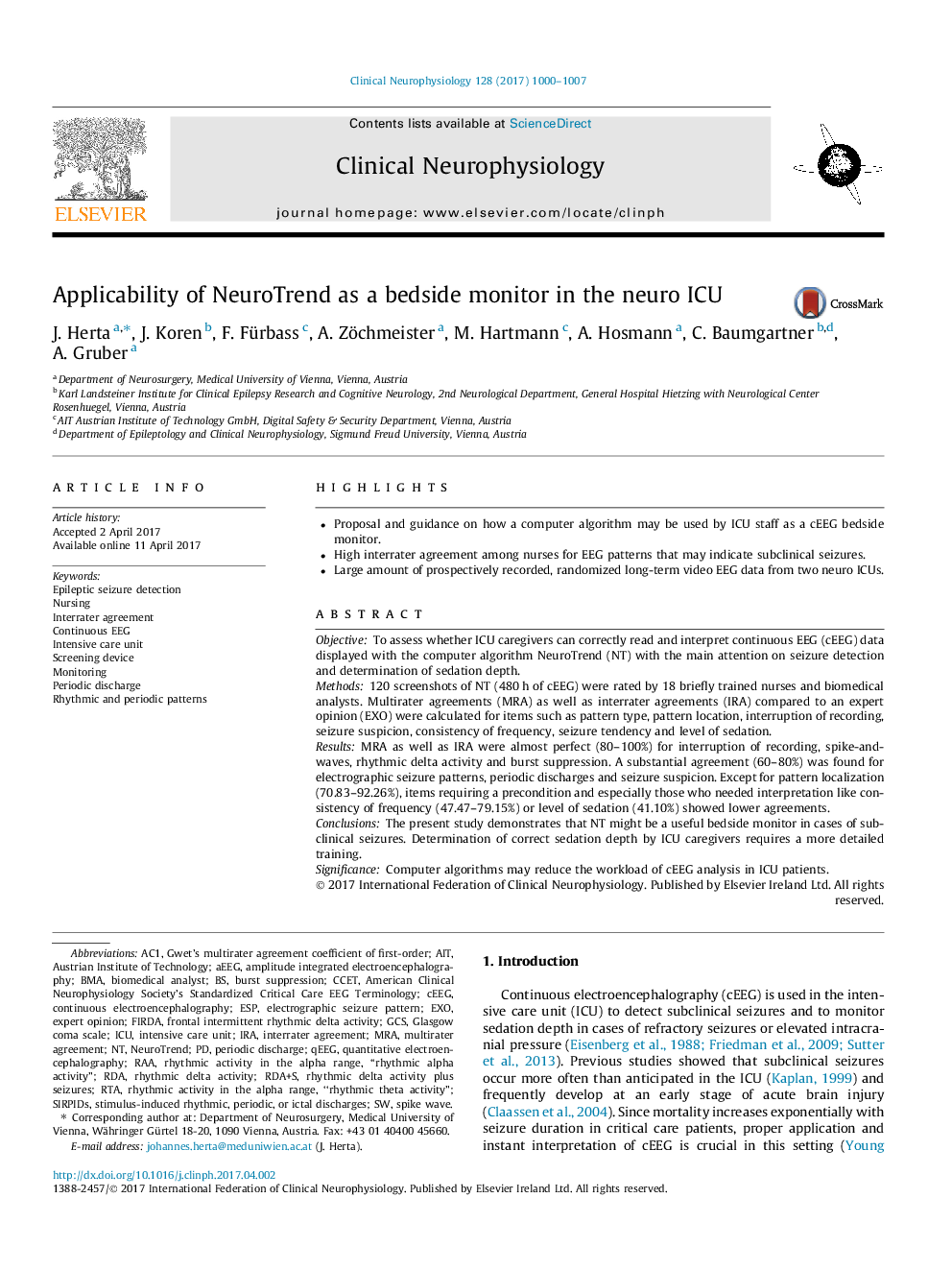| Article ID | Journal | Published Year | Pages | File Type |
|---|---|---|---|---|
| 5627922 | Clinical Neurophysiology | 2017 | 8 Pages |
â¢Proposal and guidance on how a computer algorithm may be used by ICU staff as a cEEG bedside monitor.â¢High interrater agreement among nurses for EEG patterns that may indicate subclinical seizures.â¢Large amount of prospectively recorded, randomized long-term video EEG data from two neuro ICUs.
ObjectiveTo assess whether ICU caregivers can correctly read and interpret continuous EEG (cEEG) data displayed with the computer algorithm NeuroTrend (NT) with the main attention on seizure detection and determination of sedation depth.Methods120 screenshots of NT (480Â h of cEEG) were rated by 18 briefly trained nurses and biomedical analysts. Multirater agreements (MRA) as well as interrater agreements (IRA) compared to an expert opinion (EXO) were calculated for items such as pattern type, pattern location, interruption of recording, seizure suspicion, consistency of frequency, seizure tendency and level of sedation.ResultsMRA as well as IRA were almost perfect (80-100%) for interruption of recording, spike-and-waves, rhythmic delta activity and burst suppression. A substantial agreement (60-80%) was found for electrographic seizure patterns, periodic discharges and seizure suspicion. Except for pattern localization (70.83-92.26%), items requiring a precondition and especially those who needed interpretation like consistency of frequency (47.47-79.15%) or level of sedation (41.10%) showed lower agreements.ConclusionsThe present study demonstrates that NT might be a useful bedside monitor in cases of subclinical seizures. Determination of correct sedation depth by ICU caregivers requires a more detailed training.SignificanceComputer algorithms may reduce the workload of cEEG analysis in ICU patients.
